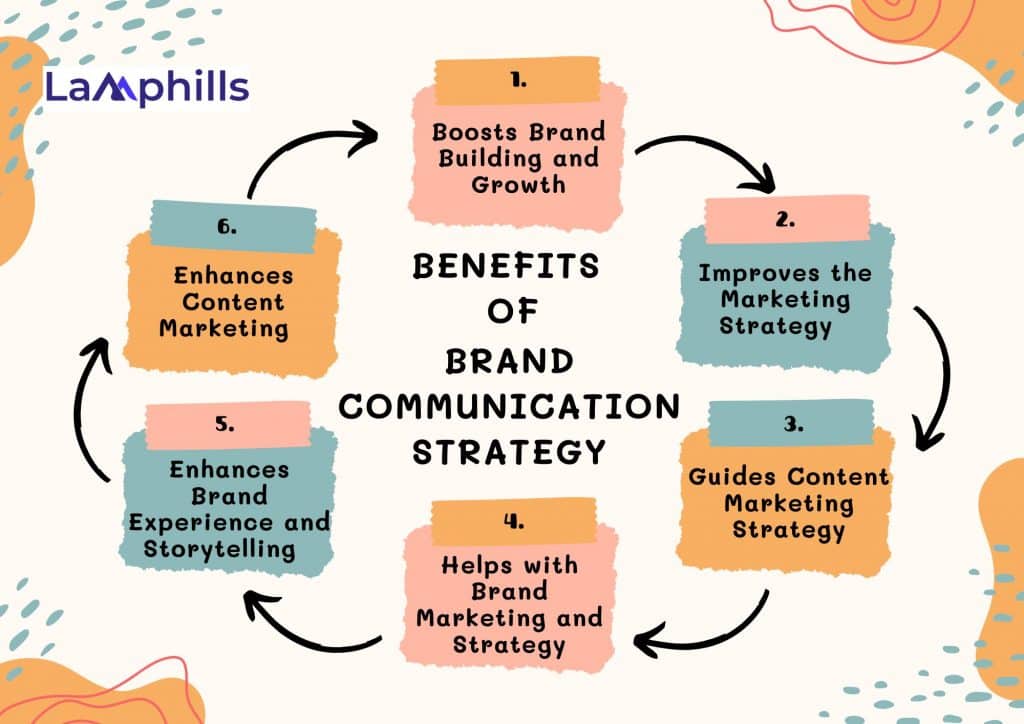Strategic communication is key to shaping how people see a brand, business, or organization and encouraging positive engagement. It plays a central role in communication, helping to build a brand’s lasting success and improving its reputation with influential people and groups.
Sola Abulu says, “A common mistake that business owners often make is assuming they know their audience. They don’t take the time to research who their audience is or what they should say to them. Good communication begins with understanding your audience.”
Brand communication is more than just sharing information; it’s about building real connections that go beyond simple transactions. It’s your brand’s voice, showing your core values, mission, and vision and sharing them with your audience through a well-thought-out brand strategy.
Keep reading this article to learn about brand communication strategy, its importance, and how to create an effective strategy that connects and engages with your audience.
Key Points
- Good communication goes beyond sharing facts; it creates emotional bonds with your audience, showing what your brand stands for.
- A clear communication strategy helps build a loyal customer base by sharing consistent messages that align with your brand’s values.
- A well-planned communication approach makes your marketing more effective by reaching the right people with the right message.
- Strong storytelling and brand experiences create memorable interactions, making customers more engaged and likely to stay loyal.
- Consistent communication across all channels helps your brand be recognized and trusted, making it stand out in a crowded market.
What is a Brand Communication Strategy?
A few years ago, the company I worked for decided to rebrand. We had a good product, but our audience wasn’t connecting with us as we wanted. That’s when we realized it wasn’t just about having a good product; we needed a clear, consistent message that resonated with our target market.
We sat down as a team and mapped out how every communication point should reflect the brand’s new direction. It wasn’t easy, but it made a big difference.
Definition: A brand communication strategy is a plan that shows how a company shares its message with its target audience. It’s like a guide that helps communicate a brand’s identity and value through the right messages, channels, and methods.
It’s not about what you say but how you say it, ensuring your brand’s message connects emotionally with your customers. In today’s digital market, where customers interact with your brand on different platforms, consistency in your brand’s communication is key to success.
A solid brand communication strategy helps you figure out the best ways to share your:
- Brand’s main message
- Build customer loyalty
- Increase sales
- Provide valuable content across various channels
This strategy ensures marketing efforts match the company’s goals and that the message reaches the right people.
Now, let’s see why strategic communication is necessary in building your brand identity.
Why Is Brand Communication Strategy So Important?

A strong brand communication strategy is essential in a busy market where customers see many brand messages every day. It’s not just an advantage; it’s the foundation that helps a product or service succeed and grow.
No matter what type of marketing is used, digital, integrated, or content marketing, a brand can create and use a brand communication strategy. This strategy is important because it shapes how people view, buy, and interact with the brand.
Some people think brand strategy and brand communication strategy are the same, but they are different. A good brand communication strategy helps you reach your audience where they are, engage them with meaningful content, and grow your brand consistently and impactfully.
Here are other reasons why it matters across different types of marketing:
#1. Boosts Brand Building and Growth
Brands need a clear communication plan to build themselves successfully. This plan helps shape how the brand is presented in messages, making sure these messages reflect the brand’s values, vision, and mission.
The brand creates a strong identity and clear message by keeping everything aligned, helping it connect with its audience. This connection leads to customer loyalty.
#2. Improves the Marketing Strategy
A planned approach to brand communication helps create the best balance of product, price, place, and promotion.
By using various channels like TV, online platforms, and other brand touchpoints, businesses can ensure their marketing strategy not only reaches their target audience but also presents their products more attractively, leading to more effective marketing.
#3. Guides Content Marketing Strategy
Content is a major part of digital marketing. While digital marketing focuses on promoting the brand, content strategy ensures that all content is on-brand, engaging, and effectively shared to meet advertising goals.
This relationship-based method helps increase engagement and improve conversion rates, making content marketing more effective.
#4. Helps with Brand Marketing and Strategy
Managing brand communication is key to successful marketing and strategy. It helps share the brand’s main features and values through different channels and ensures they are presented clearly.
Additionally, it helps the brand stand out from competitors and claim its place as a strong market leader.
#5. Enhances Brand Experience and Storytelling
Strategic communication is key in building a brand because it ensures a consistent and memorable experience. This includes every customer interaction with the brand before, during, and after purchasing.
Brand stories help shape these experiences by using narratives to form an emotional connection with the audience. This emotional connection influences customers’ decisions and helps them remember the brand, increasing loyalty.
#6. Brand Design and Visual Identity
Brand design and visual identity are about the look and feel of everything people can see and interact with. This includes the logo, colour scheme, fonts, and a plan that ties it all together.
It’s important that the design looks good and works well when people use it across different platforms and interactions.
#7. Enhances Content Marketing
In today’s digital and content marketing world, it’s crucial to fit content into a brand communication strategy. Content not only attracts customers but also keeps them engaged. This approach helps build a content marketing plan that meets both audience needs and business goals, leading to successful marketing.
In summary, a brand communication strategy is essential for ensuring your team is on the same page and building an emotional connection with customers, which leads to loyalty and more sales.
How to Create a Brand Communication Strategy
First, my team and I defined who we were as a brand, what we stood for, and how we wanted to be seen. Then, we built our communication strategy around those key ideas.
To build an effective brand communication strategy, you need to:
- Create a plan that fits the unique needs of your business.
- Focus on delivering a clear message that connects with your audience.
Understanding and listening to your audience can create a conversation that encourages engagement and growth. Here are steps to develop a brand communication strategy:
#1. Know your goals
First, understand why you want to communicate as a brand. It could be to raise awareness, improve customer service, build a good reputation, increase profits, strengthen brand loyalty, or retain employees. You might also want to stay ahead of the competition.
Think about the main reasons for communicating before moving forward. This will help you create a clear plan that benefits your brand’s image and position.
To set your goals, you can use the SMART approach. Make sure your goals are specific, realistic, and have a deadline. Also, be sure to track your progress. The goals can be short or long-term, but they should always align with your business objectives before you study your target audience.
#2. Conduct a SWOT analysis
A SWOT analysis will help you understand where your brand stands today and what the future could look like.
- Strengths: What is your brand doing well when communicating with customers?
- Weaknesses: Where could it improve?
- Opportunities: How can you use available tools to improve?
- Threats: What risks do you face if you don’t improve?
For example, strengths could include a well-known brand name, meeting unique customer needs, or having a well-organized website. Weaknesses might be unclear messaging, inconsistent branding, or poor online engagement. Opportunities could involve creating regular content, investing in social media, or improving your brand’s image. Threats might be reduced sales, unclear messages that confuse customers, or bad reviews affecting potential buyers.
#3. Identify your brand’s audience
Before you start sharing messages about your brand, it’s important to figure out who your audience is and understand them. If your messages don’t connect with the right people, it will be harder to meet your goals. You need to know who your target market is and what influences their decisions. Market research can help you figure this out. Research includes studying customer profiles, pricing, campaigns, and market segmentation.
For example, market segmentation can help you find the most valuable audience by examining behaviour and demographics. You can divide your audience based on gender, age, location, interests, education, job, income, work habits, and how they use information and devices. This helps you send more tailored messages that speak directly to each group’s needs.
#4. Define your Unique Selling Proposition (USP)
The USP is what makes your brand stand out from competitors. It helps attract the right customers by clearly showing why they should choose your brand. It also guides how you communicate and make marketing decisions.
When defining your USP, focus on what sets your brand apart and how that difference appeals to your audience. Make sure it’s strong and shows confidence in what you offer. Keep it specific and easy to understand. It’s also best if it’s short but memorable.
#5. Research your competitors
Besides staying updated on market trends, looking into what your competitors are doing can show you how they communicate with their customers. Pay attention to things like how often they post on social media, how fast they respond to customers, and the way they talk to their audience. This can help you shape how your brand interacts with customers. You might also notice gaps in their communication and find ways to do it better.
You can also go through their buying process on their website, like how they greet customers and how fast they respond. If possible, sign up for their newsletter to see how they present their brand and how consistent they are. This information can help you build your own communication plan for the brand.
#6. Set brand guidelines
Having clear brand guidelines makes it easier to keep your message consistent, helping customers recognize your brand and stay loyal. Here are some things to consider for your brand communication:
- Choose a tone of voice that makes your audience feel comfortable. For instance, a marketing company might need a more formal tone, while a cleaning business can be more casual.
- Pick a color scheme that represents your brand. Most brands use one main color and add three complementary colors. This helps people quickly recognize your brand.
- Use a brand logo that works across different platforms. Make sure you have different formats for it.
- Decide what kind of images to use. Stock photos may not be the best choice if you want to stand out, so you might want to use real-life photos to help customers picture themselves using your products or services.
- Select a font for writing captions, titles, or any other text to keep your brand’s look consistent.
#7. Think about how often you’ll communicate
Decide how often you can post on social media, blogs, email, and other places where you can reach your audience. For example, posting SEO content regularly on your blog can help improve your brand’s online presence. People have different ideas about how often to post on social media, like once or twice a day. Some believe posting more than two times daily might lower engagement. It’s important to test this by posting and seeing how your audience reacts. Some brands, like media outlets, post as much as six times daily to boost engagement and followers. What works best depends on your brand and the quality of your posts, so it’s key to know what your audience likes and what messages resonate with them.
#8. Set key performance indicators (KPIs)
Set KPIs to track how well your brand communication is working. Some things you can measure include more subscribers, website inquiries, comments, shares, likes, or followers on your blog, social media, or videos. For more detailed tracking, you can look at backlinks to your website, more leads, conversion rates, or mentions from other brands. Once you know which indicators to track, you can measure your progress and see if your strategy works as expected.
#9. Leverage multiple channels
In today’s world, using only one communication method isn’t enough. You need to use different channels, such as social media, email, and press releases, to communicate effectively. Each platform has its own benefits, and a strong plan will help you maximize them all.
Understanding your audience helps you choose the best ways to reach them. Here are some options you can use:
Social media
In 2020, around 3.6 billion people used social media, and it’s expected to grow to 4.41 billion by 2025. Pick the platforms where your audience spends the most time. Consistently post good content, and plan it ahead with a content calendar.
Email marketing
Emails can keep your customers and potential clients informed about your brand. It’s also a good way to promote upcoming events or sales. Make sure to organize your email list based on different customer needs to keep them engaged. You can also use surveys to ask what kind of information they want to receive.
Web content
Blogging is a great way to attract visitors to your website and engage with them. It helps you share important information and get feedback. Other types of web content include e-books, white papers, case studies, industry reports, product brochures, webinars, and podcasts.
#10. Measuring the Impact of Your Communication Strategy
No strategy is complete without assessing its effectiveness. After implementing a communication strategy, tracking metrics like customer engagement, brand awareness, and even sales conversions is essential. In my experience, one of the most rewarding aspects of brand communication is seeing tangible results—an increase in social media engagement or a boost in customer loyalty.
Creating a strong brand communication strategy helps your business connect with the right people and share messages that reflect your values. To make this easier, we’ve created a simple template you can follow. This step-by-step guide will help you define your brand’s message, reach your audience, and measure your success.
Whether you’re just starting or looking to improve your communication, this template will give you a clear plan to build your brand’s identity and grow your business.
Feel free to use it as a blueprint to shape your strategy!
Success Stories in Brand Communication
Let’s examine some real-life examples of successful brand communication to see how important a good strategy is.
These stories highlight the power of clear communication and offer helpful tips for your brand. They focus on being clear, knowing your audience, and understanding the customer journey.
Heineken’s “Open Your World” Campaign
Heineken’s “Open Your World” campaign is an excellent example of how a brand can use communication to start a global conversation about being open and socially united.
The campaign featured commercials and social media activities encouraging people to talk and share their views on different topics, helping break down social barriers.
This led to a big boost in brand engagement and strengthened Heineken’s global image as a company that supports diversity and inclusion.
Key takeaways from this campaign are the importance of aligning brand values with global social issues and the power of using humor and storytelling to connect with people.
Procter & Gamble’s “Thank You, Mom” Campaign
Procter & Gamble (P&G) launched the “Thank You, Mom” campaign during the 2012 Olympics to celebrate and honour mothers worldwide. The campaign highlighted the role mothers play in raising athletes and supporting their dreams, using emotional storytelling to connect with their audience.
P&G shared the campaign through TV ads, social media, and partnerships with Olympic athletes. The message focused on gratitude and family values, resonating with people globally.
This campaign boosted P&G’s brand image and strengthened its emotional connection with customers.
The key lesson from this example is the power of emotional storytelling in building brand loyalty. By focusing on universal themes like family and gratitude, brands can create lasting emotional bonds with their audience.
Just like the Reckitt Benckiser case, this campaign shows how careful planning and authentic messaging can make a big impact on brand perception.
Reckitt Benckiser’s Health and Hygiene Education Campaign
During the COVID-19 pandemic, Reckitt Benckiser, known for brands like Dettol and Lysol, took action to teach people about health and hygiene. They shared important and helpful information to guide the public through the crisis.
The company used social media, videos, and partnerships with health organizations to spread its message.
This campaign strengthened Reckitt Benckiser’s reputation as a leader in hygiene products and showed its dedication to public health and safety.
The main lesson from this example is that sharing valuable and educational information during a crisis can build trust and loyalty with consumers.
These examples aren’t just stories of success—they are learning opportunities. They show how careful planning, execution, and improvement can lead to effective communication strategies for your brand.
Bottom Line
In conclusion, strategic communication is powerful in building and maintaining a strong brand identity. By ensuring that all messages are consistent, tailored to your audience, and delivered through the right channels, you create a brand that people recognize, trust, and connect with on a deeper level.
A well-executed communication strategy doesn’t just promote products or services; it shapes how people see and feel about your brand. When done right, it sets you apart in a crowded market and creates long-lasting relationships with your customers.
Frequently Asked Questions
What is the meaning of strategic communication?
Strategic communication is a focused way of sharing and receiving information. It involves sending the right message through the right channels to the right audience at the right time and using their feedback to keep company goals on track.
What are the 5 Ps of strategic communication?
It offers a clear method to study and create simple, effective strategies. So, what are the 5 P’s? They stand for Plan, Ploy, Pattern, Position, and Perspective.
What is an example of strategy communication?
Crisis management: Imagine a company recalling a product. It’s important to quickly share clear, honest, and regular updates with the public and stakeholders through press releases, social media, and direct messages.
What are the five principles of strategic communication?
The following key points of strategic communication are based on these ideas and Paul’s (2011) arguments.
- Purposeful message creation: Strategic communication requires careful thinking, planning, and analysis.
- Choosing the right platform(s)
- Thoughtful timing
- Picking and understanding the audience
- Aiming for the right impact.
What are the four major components of a communication strategy?
4 Key Parts of a Successful Strategic Communications Plan
1. Set Clear Communication Goals: Tailor your goals to fit the type of organization you’re creating the plan for.
2. Know Your Audience: Understand who you are talking to and what they care about.
3. Use Social Media Wisely: Be aware of how to use social media for your message best.
4. Track Your Success: Measure how well your communication efforts are working.
Similar Articles
How I Mastered Brand Communications: Strategies for Clear and Effective Messaging
How Does Internal Communication Contribute to Your Business Success?
Is Communications a Good Major? All You Need To Know






